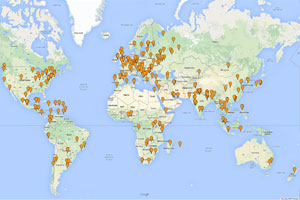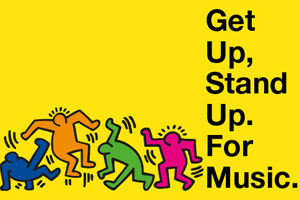World IP Day - Are you using protection?On April 26th 2015, people around the globe celebrated World Intellectual Property Day to help raise awareness of the importance of innovation and creativity. The focus this year was on the importance of music to our cultural and economic development and it’s future in this age of information. Events such as Loud @ Proud Music Festival in London, China IP Week in Beijing and World IP Day in Detroit are aimed at bringing people together to help understand their rights and how best to protect their IP. Intellectual Property RightsIP tends to mean different things to different people. According to WIPO, the World Intellectual Property Organization., it covers everything from Copyright, Patents and Trademarks, to Industrial Design and Geographical indications. In Product Design, here in Melbourne and around the world IP protection tends to congregate around Patents and Design Registration. Intellectual Property Rights allow creators or owners of the rights to benefit from their own work or investment in a creation. Patents and Design RegistrationSo what is the difference? Both rights provide the owner with protection over their product just to different degrees. A Patent offers a greater level of protection but is only granted for a product or device that demonstrates it is new or inventive. A Patent allows for a ‘technology’ to be developed that could be applied to numerous and various products and allows for a product to evolve with time. A Design Registration on the other hand is usually taken out when a patent isn’t achievable, that is it’s not deemed inventive, but the owner wants to protect the design itself, the way it looks. This means that when the product is redesigned it will no longer be protected by the existing rights of the Design Registration. To Patent or not to Patent?It may sound like a weird question to most people but the best way to market may not be to lodge a Patent at all. Firstly, by Patenting your idea you are publishing your idea and exposing it to the world allowing others insight into your innovation. Secondly, Patents cost money and a lot of it and unfortunately it’s not ‘one Patent fits all’. Patents are country specific so you will need a separate Patent for each country you plan on operating in, that’s up to 196 separate Patents if you want to cover the world. Thirdly, a patent is only worth having if you have a means by which to protect it. That is, if someone was to infringe on it, do you have the capital to fight it? Instead, it may be worth investing the money that would have gone towards the Patent on getting the product to market first and becoming the category leader. When should I Patent?If Patenting has been identified as the right course of action then choosing the right time to lodge becomes the next important milestone. A strong Patent covers all possible incarnations of the innovation and the best way to ensure this is to explore all avenues through the development process and wait as long as possible to lodge. This allows the application to include any possible changes and developments made throughout the design process. To ensure the Patent is valid you must remember to always submit the patent application before publicly disclosing the innovation. An Important AssetDeveloping Intellectual Property is an important aspect of business growth and companies looking to expand invest heavily in R&D. According to the latest data from IP Australia as outlined on The Drum we are falling behind most other countries in our Patent applications and R&D investment and without this Australia will be left behind. If you’re looking for new business opportunities or need help with a Patent application and new product development please contact us in Melbourne on (03) 9413 9000 or email Mark at This email address is being protected from spambots. You need JavaScript enabled to view it.. |



|
+61 3 9413 9000

